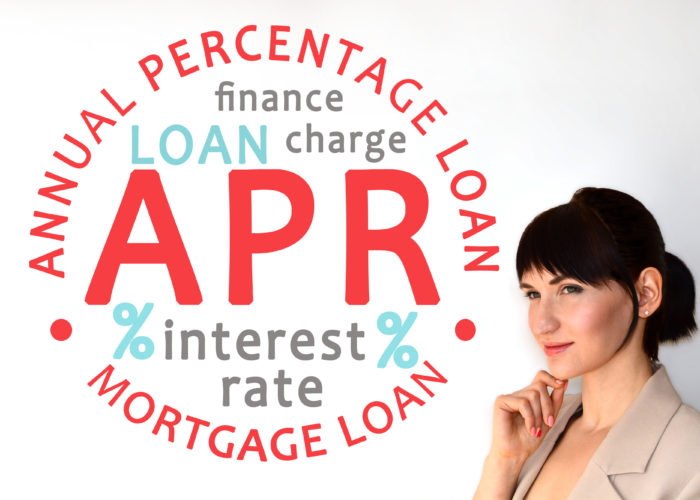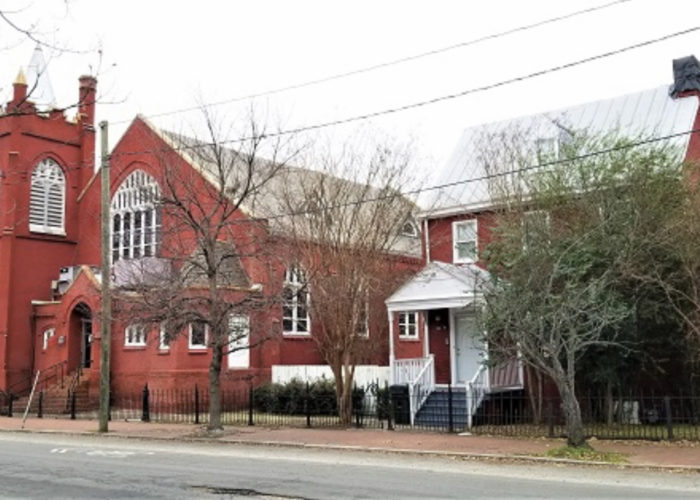- Buy
- Land
- Rent
- Rural
- Commercial
- Commercial Land
- Business
- APR(c)Tm.
- About US
Getting The Funding You Need
-
Regardless of what your real estate needs are we are able to assist you in your commercial real estate transaction
- WE FUND LOANS , REFINANCE , AND OR OFFER CASH OUT FOR INVESTMENT PROPETIES;
- WE CAN PURCHASE OR SALE YOUR HOME ;
- WE CAN OWNER FINANCE YOUR HOME
- PRIVATE CAPITAL AND DIRECT FUNDING;
- REAL-ESTATE PHOTOGRAPHY AND MARKETING ;
- REAL-ESTATE INVESTOR CONSULTING SERVICES .
Off market properties in real estate notes
APR CAPITAL MORTGAGE (C)TM , PRESENTS - Glass Door Capital (C)TM . - The First Online Real Estate Investment Group , For Investors , and Agents , We are a Equal Housing Lender who Buys , Sales , and Invests in Commercial Properties , Off Market Whole Sale Real Estate Properties , as well as who Funds Investors who seek to Purchase New , Refinance , and or Cash Out , Real Estate Properties , by Contract of Note. We Supply and offer , Buyers Commercial and Single Family Real Estate . As Well as Buy Notes and Off Market Properties to Maintain our Securities Portfolio , Want to Sell Your Home , Off Market , Online Than- Publish your Property For Sale - Sale Your Property - Get Funded - or Buy Wholesale Property with APR CAPITAL MORTGAGE .

Progress About US Page One

Investment Funding for RealEstate Professionals
Private Placement Loans , have offset new and exciting opportunity for Realestate Investors , who need assistance raising capital , for New Purchase , Rehab Money , and Refinance. Our Company Raises Private Capital and assists in your funding requirements and needs. We are a Direct Lender, who also have team of Investment Broker(s) , who will Fund , Buy , and or Sell Your Home without the Traditional Hassle of the Market Place. We are herein to assist you in your Realestate Needs. ;
APR Private Funding
APR Refinance For Investors
APR Cash Out Refinance
APR Real Estate Investment
APR Real Estate Consulting
-

Capitalization Rate
The percentage of the investment the investor will receive back each year from the net income from the property.Cap Rate Definition
What is a cap rate? The capitalization rate, often just called the cap rate, is the ratio of Net Operating Income (NOI) to property asset value. So, for example, if a property recently sold for $1,000,000 and had an NOI of $100,000, then the cap rate would be $100,000/$1,000,000, or 10%.
Cap Rate Example
Let’s take an example of how a cap rate is commonly used. Suppose we are researching the recent sale of a Class A office building with a stabilized Net Operating Income (NOI) of $1,000,000, and a sale price of $17,000,000. In the commercial real estate industry, it is common to say that this property sold at a 5.8% cap rate.Intuition Behind the Cap Rate
What is the cap rate actually telling you? One way to think about the cap rate intuitively is that it represents the percentage return an investor would receive on an all cash purchase. In the above example, assuming the real estate proforma is accurate, an all-cash investment of $17,000,000 would produce an annual return on investment of 5.8%. Another way to think about the cap rate is that it’s just the inverse of the price/earnings multiple. Consider the following chart: As shown above, cap rates and price/earnings multiples are inversely related. In other words, as the cap rate goes up, the valuation multiple goes down.
As shown above, cap rates and price/earnings multiples are inversely related. In other words, as the cap rate goes up, the valuation multiple goes down.
What is a Good Cap Rate?
What’s a good cap rate? The short answer is that it depends on how you are using the cap rate. For example, if you are selling a property then a lower cap rate is good because it means the value of your property will be higher. On the other hand, if you are buying a property then a higher cap rate is good because it means your initial investment will be lower. You might also be trying to find a market-based cap rate using recent sales of comparable properties. In this case, a good cap rate is one that is derived from similar properties in the same location. For example, suppose you want to figure out what an office building is worth based on a market-derived cap rate. In this case, a good cap rate is one that is derived from recent office building sales in the same market. A bad cap rate would be one derived from different property types in different markets.When, and When Not, to Use a Cap Rate
The cap rate is a very common and useful ratio in the commercial real estate industry and it can be helpful in several scenarios. For example, it can and often is used to quickly size up an acquisition relative to other potential investment properties. A 5% cap rate acquisition versus a 10% cap rate acquisition for a similar property in a similar location should immediately tell you that one property has a higher risk premium than the other. Another way cap rates can be helpful is when they form a trend. If you’re looking at cap rate trends over the past few years in a particular sub-market then the trend can give you an indication of where that market is headed. For instance, if cap rates are compressing that means values are being bid up and a market is heating up. Where are values likely to go next year? Looking at historical cap rate data can quickly give you insight into the direction of valuations. While cap rates are useful for quick back of the envelope calculations, it is important to note when cap rates should not be used. When properly applied to a stabilized Net Operating Income (NOI) projection, the simple cap rate can produce a valuation approximately equal to what could be generated using a more complex discounted cash flow (DCF) analysis. However, if the property’s net operating income stream is complex and irregular, with substantial variations in cash flow, only a full discounted cash flow analysis will yield a credible and reliable valuation.Components of the Cap Rate
What are the components of the cap rate and how can they be determined? One way to think about the cap rate is that it’s a function of the risk-free rate of return plus some risk premium. In finance, the risk-free rate is the theoretical rate of return of an investment with no risk of financial loss. Of course, in practice, all investments carry even a small amount of risk. However, because U.S. bonds are considered to be very safe, the interest rate on a U.S. Treasury bond is normally used as the risk-free rate. How can we use this concept to determine cap rates? Suppose you have $10,000,000 to invest and 10-year treasury bonds are yielding 3% annually. This means you could invest all $10,000,000 into treasuries, considered a very safe investment, and spend your days at the beach collecting checks. What if you were presented with an opportunity to sell your treasuries and instead invest in a Class A office building with multiple tenants? A quick way to evaluate this potential investment property relative to your safe treasury investment is to compare the cap rate to the yield on the treasury bonds. Suppose the acquisition cap rate on the investment property was 5%. This means that the risk premium over the risk-free rate is 2%. This 2% risk premium reflects all of the additional risk you assume over and above the risk-free treasuries, which takes into account factors such as:- Age of the property.
- Creditworthiness of the tenants.
- Diversity of the tenants.
- Length of tenant leases in place.
- Broader supply and demand fundamentals in the market for this particular asset class.
- Underlying economic fundamentals of the region including population growth, employment growth, and inventory of comparable space on the market.
Band of Investment Method
The above risk-free rate approach is not the only way to think about cap rates. Another popular alternative approach to calculating the cap rate is to use the band of investment method. This approach takes into account the return to both the lender and the equity investors in a deal. The band of investment formula is simply a weighted average of the return on debt and the required return on equity. For example, suppose we can secure a loan at an 80% Loan to Value (LTV), amortized over 20 years at 6%. This results in a mortgage constant of 0.0859. Further, suppose that the required return on equity is 15%. This would result in a weighted average cap rate calculation of 9.87% (80%*8.59% + 20%*15%).The Gordon Model
One other approach to calculating the cap rate worth mentioning is the Gordon Model. If you expect NOI to grow each year at some constant rate, then the Gordon Model can turn this constantly growing stream of cash flows into a simple cap rate approximation. The Gordon Model is a concept traditionally used in finance to value a stock with dividend growth: This formula solves for Value, given cash flow (CF), the discount rate (k), and a constant growth rate (g). From the definition of the cap rate, we know that Value = NOI/Cap. This means that the cap rate can be broken down into two components, k-g. That is, the cap rate is simply the discount rate minus the growth rate.
How can we use this? Suppose we are looking at a building with an NOI of $100,000 and in our analysis, we expect that the NOI will increase by 1% annually. How can we determine the appropriate cap rate to use? Using the Gordon Model, we can simply take our discount rate and subtract out the annual growth rate. If our discount rate (usually the investor’s required rate of return) is 10%, then the appropriate cap rate to use in this example would be 9%, resulting in a valuation of $1,111,111.
The Gordon Model is a useful concept to know when evaluating properties with growing cash flows. However, it’s not a one-size fit all solution and has several built-in limitations. For example, what if the growth rate equals the discount rate? This would yield an infinite value, which of course is nonsensical. Alternatively, when the growth rate exceeds the discount rate, then the Gordon Model yields a negative valuation which is also a nonsensical result.
These built-in limitations don’t render the Gordon Model useless, but you do need to be aware of them. Always make sure you understand the assumptions you are making in an analysis and whether they are reasonable or not.
This formula solves for Value, given cash flow (CF), the discount rate (k), and a constant growth rate (g). From the definition of the cap rate, we know that Value = NOI/Cap. This means that the cap rate can be broken down into two components, k-g. That is, the cap rate is simply the discount rate minus the growth rate.
How can we use this? Suppose we are looking at a building with an NOI of $100,000 and in our analysis, we expect that the NOI will increase by 1% annually. How can we determine the appropriate cap rate to use? Using the Gordon Model, we can simply take our discount rate and subtract out the annual growth rate. If our discount rate (usually the investor’s required rate of return) is 10%, then the appropriate cap rate to use in this example would be 9%, resulting in a valuation of $1,111,111.
The Gordon Model is a useful concept to know when evaluating properties with growing cash flows. However, it’s not a one-size fit all solution and has several built-in limitations. For example, what if the growth rate equals the discount rate? This would yield an infinite value, which of course is nonsensical. Alternatively, when the growth rate exceeds the discount rate, then the Gordon Model yields a negative valuation which is also a nonsensical result.
These built-in limitations don’t render the Gordon Model useless, but you do need to be aware of them. Always make sure you understand the assumptions you are making in an analysis and whether they are reasonable or not. -

Pre-approval Letter
Before you apply for a mortgage or even start looking for a home, you should get a pre-approval letter from the bank, which is an estimate of how much they’ll lend you. This letter will help you determine what you can afford, and ensures home sellers that you will be able to get a loan when needed. Money saving tip: When you go in for a pre-approval letter you should be clear on what the bank is offering. Ask them about closing costs, what fees are involved, what you’re getting for that fee, and if they’ll lock in your loan at a specific interest rate. Note that if you end up competing for a home against other offers, it can help to have a local lender. Local lenders want continued referrals and really care about their reputation; listing agents prefer to deal with them for this reason.Getting pre-approved is the next step, and it tends to be much more involved. “A pre-qualification should be a good indication of credit and the ability to borrow, but a pre-approval is the definitive word,” Of course, that doesn’t mean you should skip pre-qualification – especially if you’re on the fence about buying or unsure if you’ll be able to qualify for the type of mortgage you want. “One isn’t better than the other, and I suppose the pre-qualification step could be skipped,” says Kaderabek. “But that means a possible premature check on credit, and too many credit inquiries have a negative effect on credit.” To get pre-approved, you’ll complete an official mortgage application and supply the lender with the necessary documentation to perform an extensive check on your financial background and current credit rating. Lenders charge an application fee for pre-approval, which typically runs between $300 and $500. After reviewing your finances, the lender can pre-approve you for a mortgage up to a specified amount. You'll also have a better idea of the interest rate you’ll be charged on the loan, and you might be able to lock in an interest rate. With pre-approval you’ll receive a conditional commitment in writing for an exact loan amount, allowing you to look for a home at or below that price level. Obviously, this puts you at an advantage when dealing with a potential seller, as he or she will know you’re one step closer to getting an actual mortgage.The other advantage of completing both steps – pre-qualification and pre-approval – before you start to look for a home is that you’ll know in advance how much you can afford. This way you won’t waste time with guessing or looking at properties that are beyond your means. Getting pre-approved for a mortgage also enables you to move quickly when you find the perfect place, and in a competitive market it lets the seller know your offer is serious.Bottom Line
Pre-approved and pre-qualified are not the same thing. It’s important to note that pre-qualification is based on data you submit to a lender, who will provide a ballpark estimate of how much you can borrow. It’s not until you get pre-approved that the lender takes a close look at your financial situation and history to determine how much mortgage you can reasonably afford. Of course, just because you are approved for that much doesn’t mean you have to shop at the top of your price range. Depending on the market, you may be able to get into a perfect house for less money than you’re approved for, leaving you extra cash each month to set aside for retirement, the kids’ college funds or to check something off your bucket list. If you have questions about whether you should get pre-qualified or pre-approved – or both – ask your real estate agent. He or she will be able to tell you what’s typical in your market and if your letter will serve its purpose.


